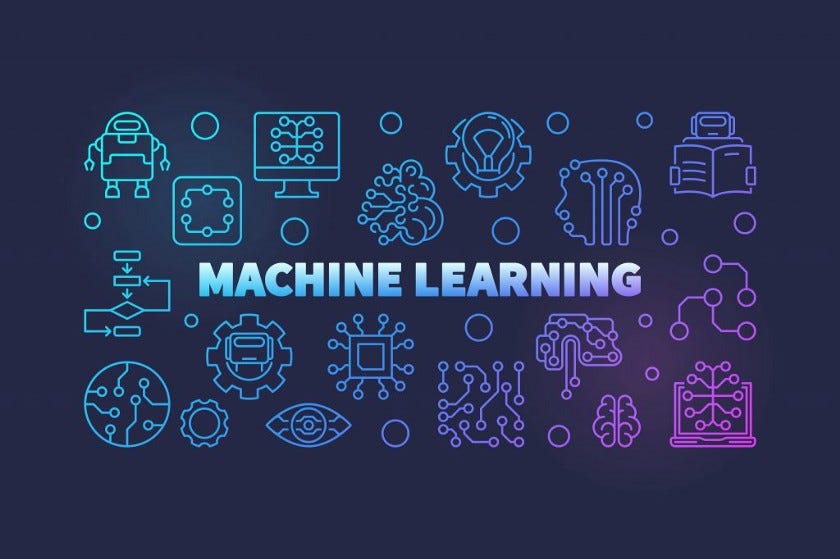Machine Learning Algorithms -Exhaustive List

Image Source: https://hackernoon.com/5-types-of-machine-learning-algorithms-you-should-know-kz2dx2002
It is extremely crucial to know and understand most of the Machine Learning algorithms. There are a number of applications of Machine Learning algorithms such as Regression, Classification, Clustering, Dimensionality Reduction, Ensemble Methods, Neural Networks and Deep Learning, Transfer Learning, Reinforcement Learning, Natural Language Processing & Word Embedding.
Algorithms operate in different styles based on the interaction with input data and it’s characteristics. It is very important to understand how different algorithms learn the patterns, trends etc and functions on given input data. Knowledge about algorithms helps us to choose the right one or combination of algorithms which is most suitable for data in hand.
Algorithms have multiple ways of learning, which are:- Supervised learning, Unsupervised learning and Semi-supervised learning.
Supervised Learning deals with labelled data and used in Regression, Classification tasks.
Algorithms:- Logistic Regression, Backward Propagation Neural Networks.
Unsupervised Learning deals with unlabeled data. The models in unsupervised learning learns from internal structure and patterns of the data. They are used to reduce redundancy, segment similar data.
Algorithms :- Clustering, Principal Component Analysis.
Semi-supervised Learning-It deals with labelled and unlabeled data. It is used for Regression and Classification tasks.
Regression algorithms
Regression algorithms are used to predict values of continuous variables by reducing prediction error over multiple iterations.
Algorithms
1. Linear Regression
2. Logistic Regression
3. Step-wise Regression
4. Least Squares Regression
Some of the Machine Learning algorithms compare new data to existing data using Similarity measures to perform predictions. These algorithms are termed as Memory based learning.
These algorithms deal with the Calculation of Similarity Measure between stored instance to new instance using similarity measure.
Algorithms
1.K-Nearest Neighbor
2. Self Organizing Map
3. Support Vector Machines
4. Learning Vector Quantization
Regularization Algorithms
These algorithms are extensions of regression methods.
Algorithms
1.Lasso Regression
2. Ridge Regression
3. Elastic Net
Decision Tree algorithms
In these algorithms, the models are constructed based on decisions arrived at from the values of data attributes present in input data. It can be used in both Classification and Regression tasks and these algorithms are fast and accurate compared to many others.
Algorithms
1.Decision Stump
2. Classification and Regression Tree (CART)
3. Conditional Decision Tree
4. Chi-Squared Automatic Interaction Detection
There are a class of algorithms which use Bayes Theorem to solve Regression and Classification problems. They are:-
Algorithms
1.Naive Bayes
2. Bayesian Network
3. Multinomial Naive Bayes
4. Gaussian Naive Bayes
Clustering algorithms
These are the algorithms which perform data segmentation based on the internal structure of data where the common data points are grouped together. They are either Centroid based/ Hierarchical clustering based.
Algorithms
1.K-Means Clustering
2. K-Median Clustering
3. Fuzzy C-Means Clustering
4. Hierarchical Clustering
Deep Learning algorithms
These are Artificial Neural Network based algorithms which are derived from the human nervous system. They are used for tasks such as Pattern matching, Regression & Classification. Deep learning deals with the development of a large network of Artificial Neural networks on large datasets.
Algorithms
1.Multi-Layer Perceptron
2. Perceptron
3. Backward Propagation
4. Gradient Descent
5. Convolutional Neural Networks
6. Recurrent Neural Networks
7. Long Short Term Memory
8. Auto-Encoders
Computer Vision algorithms
Algorithms
1.SIFT & SURF -Used for Feature point extraction
2. Kalman Filter -Object Tracking
3. Eigenfaces approach -PCA
4. Mean Shift algorithm -Fast object tracking
Natural Language Processing algorithms
Algorithms
1.Text Chunking — POS Tagging, HMM
2. Word Alignment — Maximum entropy
3. Spell Checker -Edit Distance
4. Parsing -Chart Parsing algorithms
5. Document Classification -SVM, Naive Bayes
6. Topic Modelling -Latent Dirichlet Allocation , LSI
7. Text Condensation -Rapid Automatic Keyword Extraction
Word Embedding algorithms
Algorithms
1.Embedding Layer
2. Word2Vec
3. GloVe
Conclusion
This post is a detailed listing of all the Machine Learning algorithms. I will write detailed explanation of each and every algorithm in the upcoming posts. Stay Tuned.

